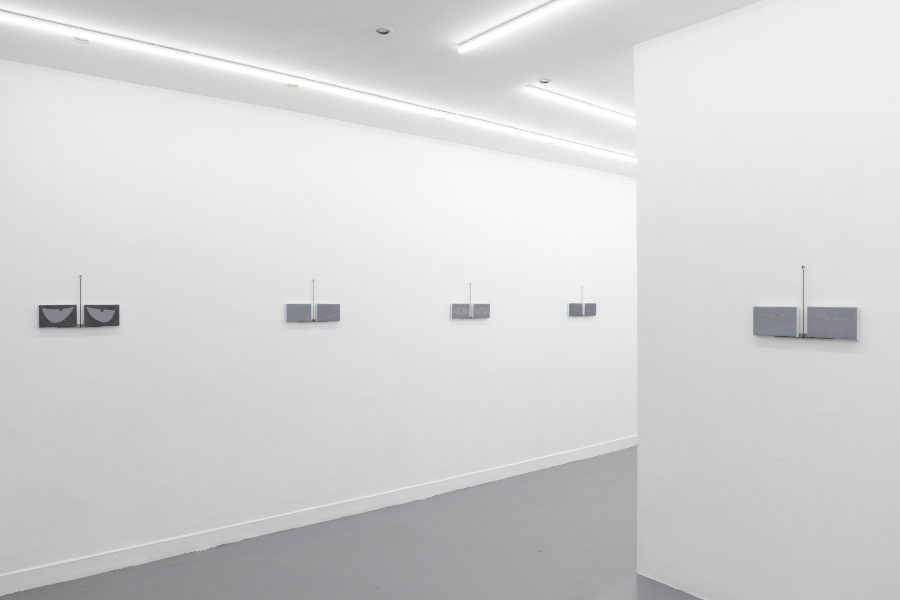
______
Entre-deux
La Salle de bains, Lyon 2025


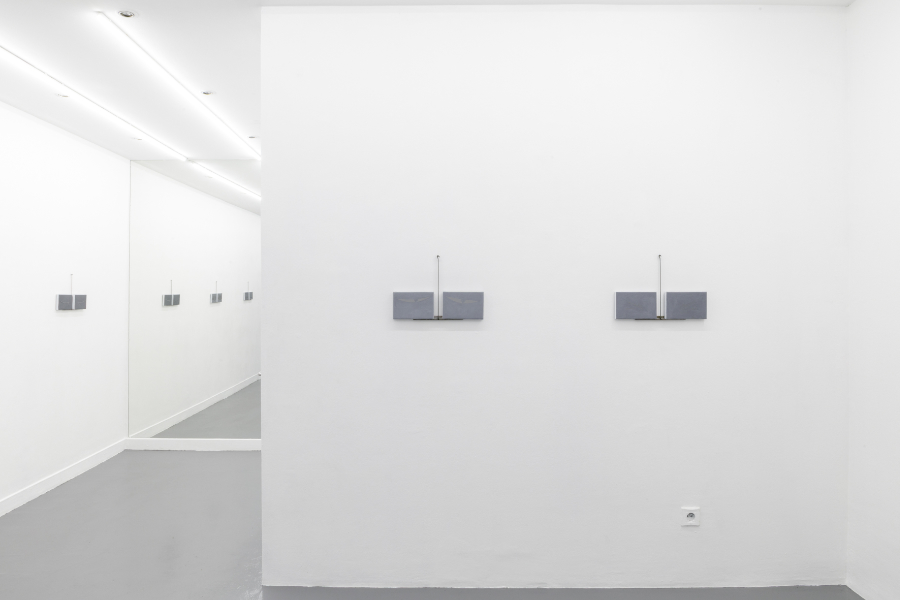
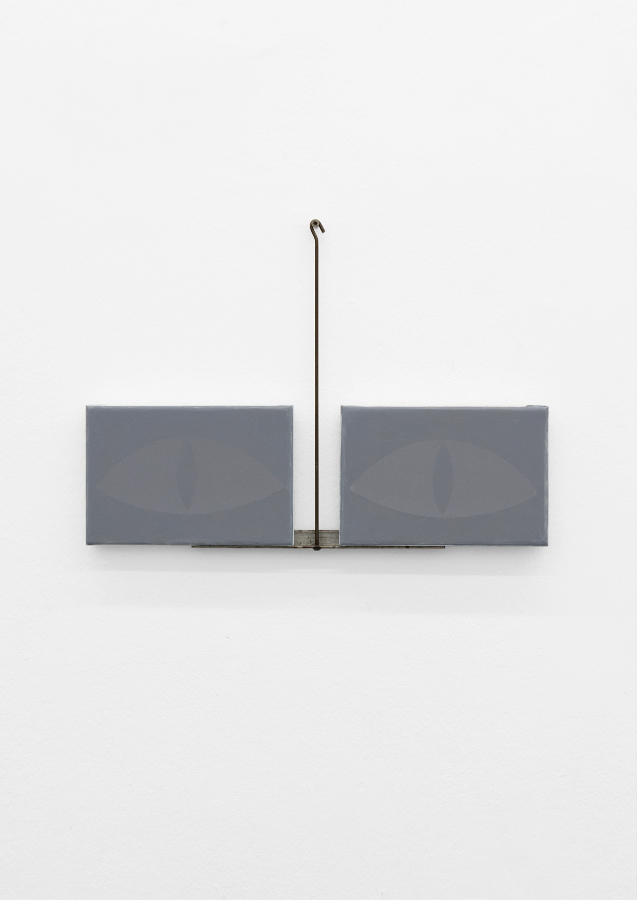
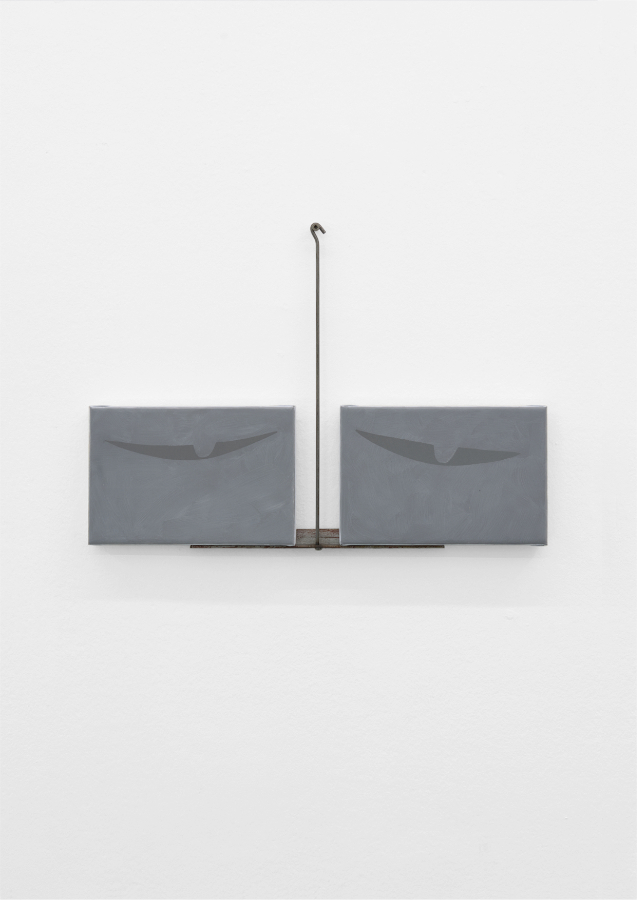
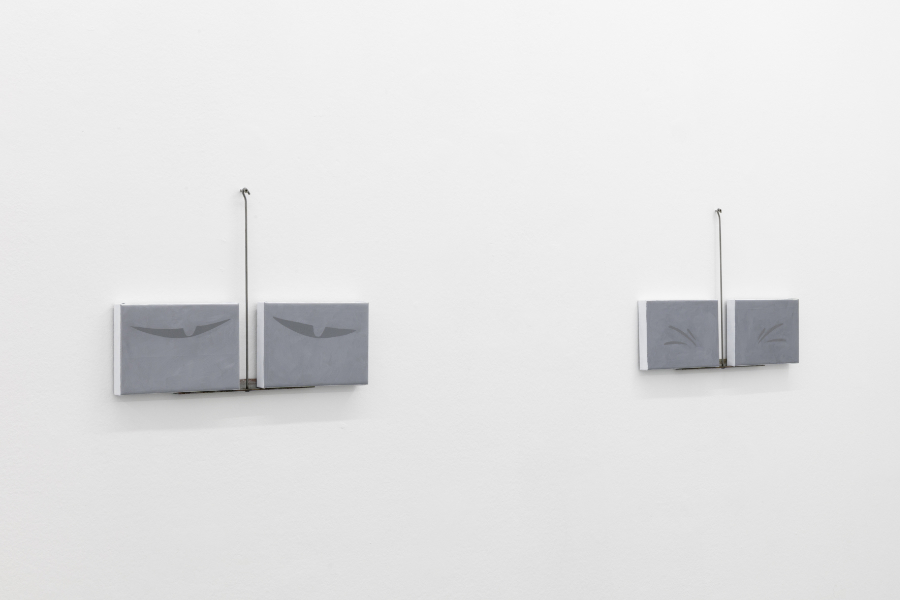
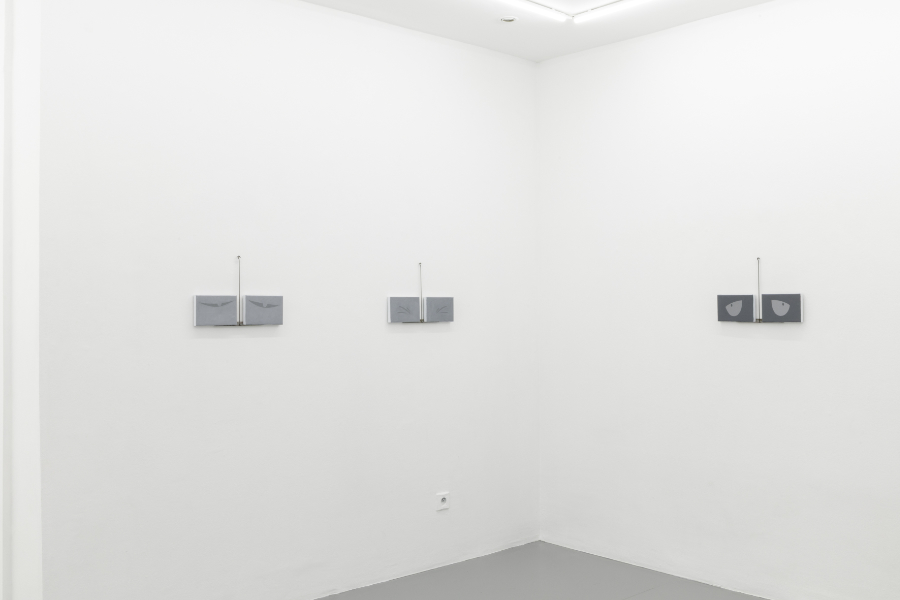
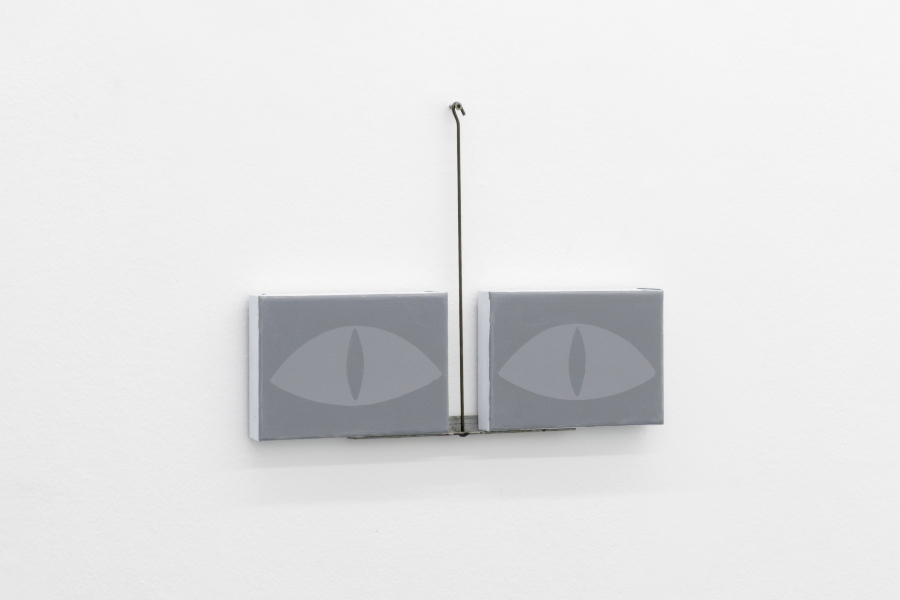
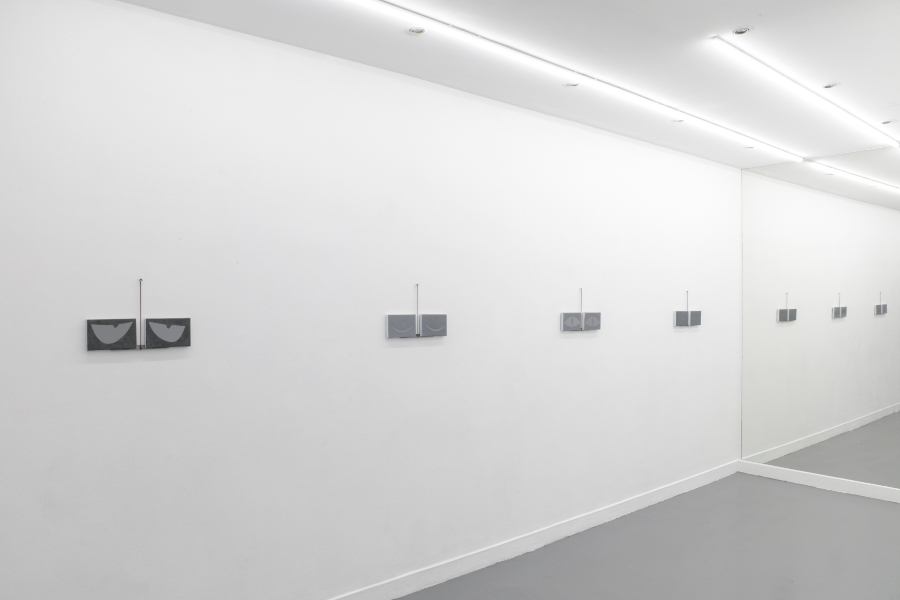

Ute Müller makes paintings. But not only that. Like most artists today – except for painters maybe – she also produces sculpture, does installations, and publishes, either alone or in a group, and cannot be pinned down as a specialist in any one medium. While she is keen on painting for its intrinsic qualities – which she has explored for many years in very large format canvases and dense multi-referential compositions – Müller is interested in those things as media. And indeed the artist wonders what it is that painting conveys to the person looking at it. What quantity of information is picked up (given that it is often more than the quantity emitted) and what sort of relationship that initiates. In a word, what happens in this conventional situation when a painting is shown to the (two) eyes of viewers, that is, at the moment they are exposed to the piece?
At first glance, the problematic is raised as directly as possible by the new works on view at La Salle de bains. Moving from one piece to next you notice they not only represent eyes that are meant to say something to us about the gaze, they also raise the concept of appearance and disappearance thanks to an effect of literalness that is just as much a caricature as well, since the effect is grounded in the very materials making up the painting. The pictures use a so-called technical fabric, one that is designed to be visible in the dark.
It’s widely known that the tautology “What you see is what you see”, a mantra of modernism in the overly quoted form coined by Frank Stella, has been a source of disagreement and misunderstanding. It seems to be short-circuited by these miniature diptychs where the painting pushes the eye back to the surface of the picture and this time it is the painting that is observing us.
The comic nature of the series, which the artist once dubbed Hooked and Crooked, seems to distance the legacy of minimalism, which Müller’s gray palette and “neutral” tones reference. Here it’s used to bring to life expressive pairs of eyes. This touch of humor seems at least to warn us of the pitfalls of the serious mind, which has recaptured part of contemporary painting staking its claim in formalism. On the other hand, she is poking fun at a tendency among artists to make everything obvious for fear of compromising their connection with the audience. It’s why they make artworks speak out so much, a veritable dubbing industry.
Moreover, these personifications of post-medium painting, depicted as cartoon figures, have not been given mouths. In the idiom of animation going back to its roots (or nearly), those eyes floating in the dark of the blank screen have meant there is a presence hiding in the dark. And if that presence is not threatening (like the mice keeping a sharp eye out for Sylvester the cat in the haunted house), it is caught in a state of confusion or solitude, even embarrassing promiscuity when several pairs of eyes find themselves jammed together in a closet. Visitors are free to transpose this to their own situation.
The title Entre-deux might also encompass then the idea of faltering or wavering as a condition that favors aesthetic experience. This promises the greatest degree of reflection (literally and figuratively) in the interval between paintings, involving viewers’ bodies in a cinematic movement inside the exhibition venue. The expression also describes the indeterminism of these objects. They are barely painted pictures that become sculptures and figures through the hanging system they employ, pointing us to all the other elements that determine their display – wall, lighting, “neutral” gray floor.
(Text: Julie Portier)
1 Warner Bros. Claws for Alarm, 1954
(Fig.1–10)
Gouache on reflective canvas, wood, steel
28 × 40 × 2 cm
______